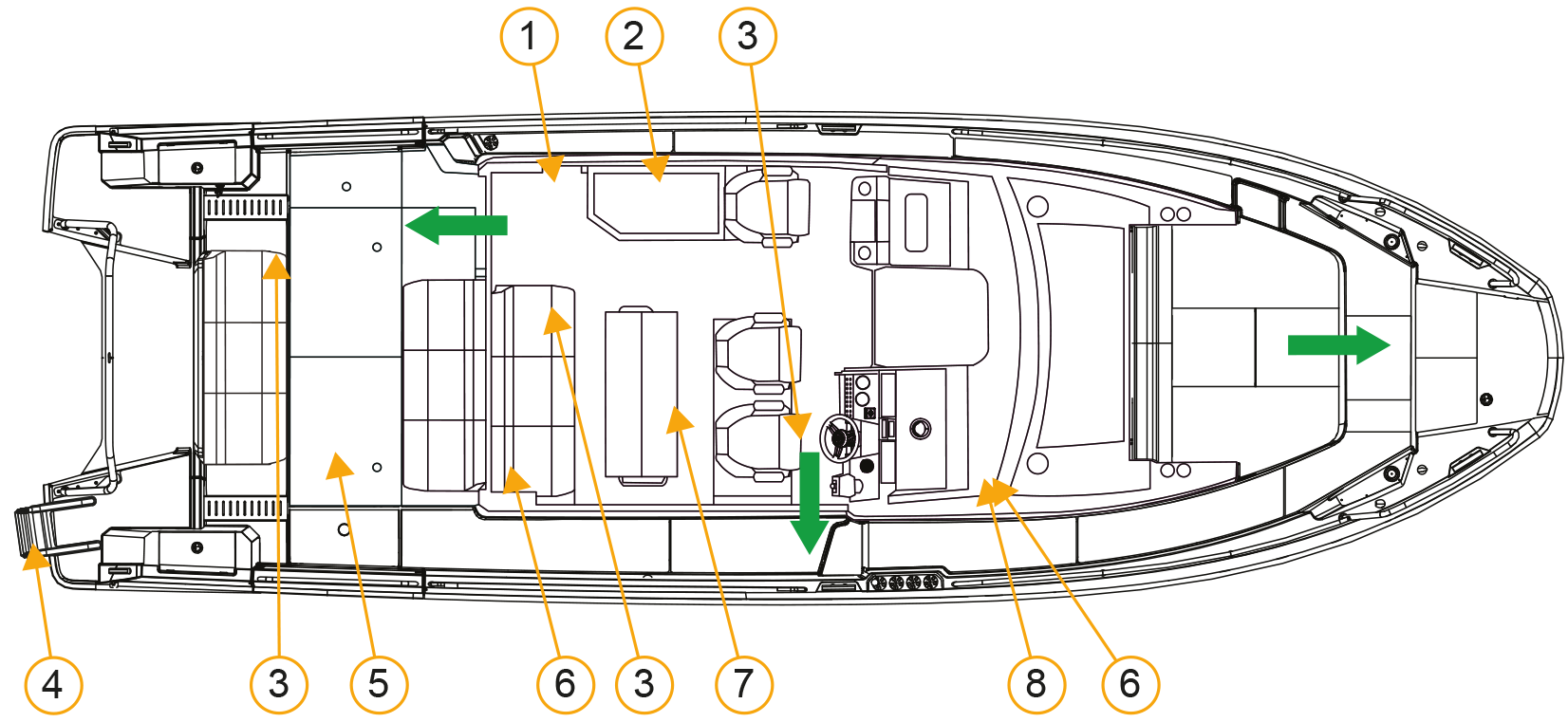The owner of the boat is responsible for ensuring that the safety equipment on the boat meets the rules and regulations of the local authorities and works properly.
The driver must be familiar with the safety equipment and ensure that it is properly used.
-
Never obstruct passageways to fire exits and hatches.
-
Never obstruct access to safety controls, fuel shut-off valves and main switches.
-
Never deliberately or inadvertently block ventilation for compartments or spaces, particularly those containing fixed gasoline engines, fixed gasoline tanks and batteries.
-
Never obstruct access to portable fire extinguishers.
-
Never modify any of the craft’s systems, unless competent to do so.
-
Never store gasoline containers or equipment containing gasoline in any area not designated as the specific storage area of gasoline.

-
Main switch panel
-
Recommended place for fire blanket (optional)
-
Recommended place for fire extinguisher
-
Swim ladder
-
Recommended place for life raft (optional)
-
Fire alarm
-
Fuel valves
-
Carbon monoxide monitor
Emergency exits are marked by green arrows.
The main switch panel includes five switches that must be turned off in case of emergency.
You are responsible for providing the additional safety equipment. There is local variation but many countries require:
-
Personal flotation devices (PFD) for all passengers
-
Distress signal devices for emergency situations
-
Fire blanket
-
Other equipment such as bails and lifesavers
-
There must be one fire alarm or carbon monoxide monitor on the boat. Check the functioning of the alarm annually by pressing the test button.